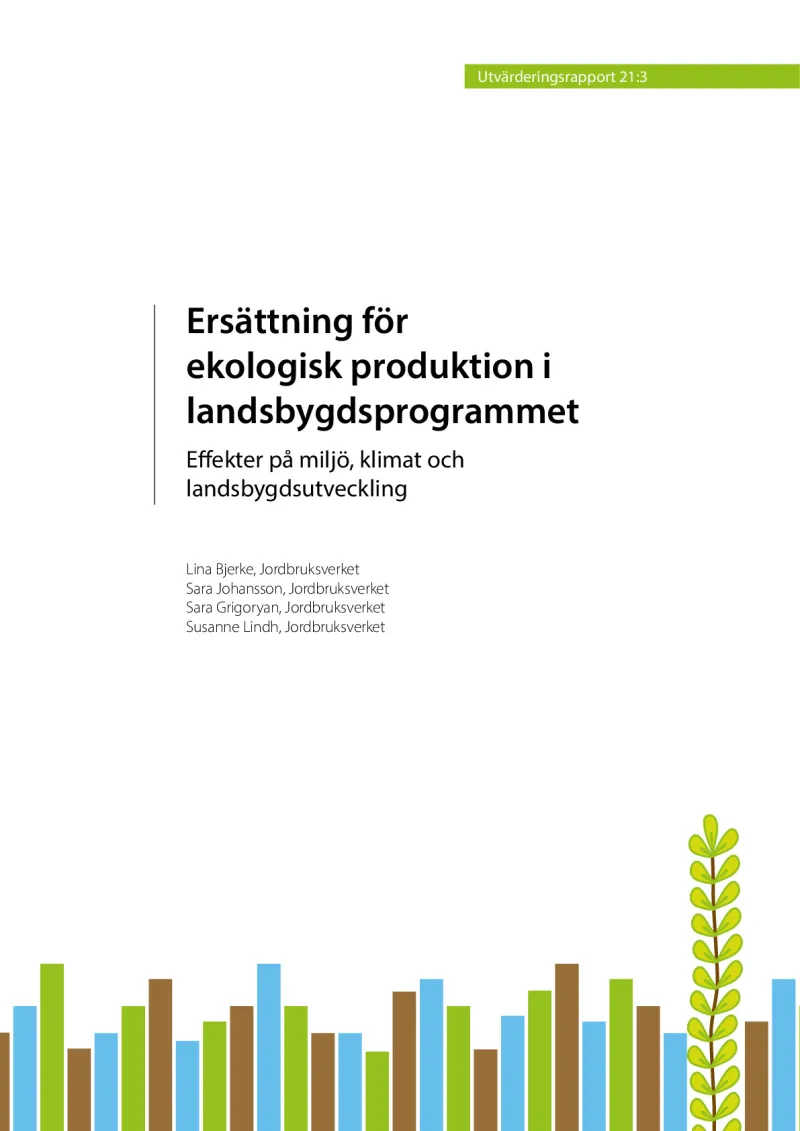Compensation for organic production in the Rural Development Programme
- Evaluation
- Food Supply Chain
- Jobs, Growth and Equality in Rural Areas
- Environment
- Agricultural Productivity
- Sustainability
- Evaluation
This interim evaluation report focuses on the effects of payments for organic production under Sweden’s Rural Development Programme (RDP).
- Sweden
- 2014-2022
- Sectorial impacts

This is an interim evaluation report covering the Common Agricultural Policy (CAP) programming period of 2014-2020. The analysis is based on data from 2007 to 2017 and is supported by a 2018 survey. The evaluation focuses on the effects of payments for organic production under Sweden’s Rural Development Programme (RDP), specifically the measure concerning compensation for certified organic production, not for conversion. It explores how these payments affect rural development and environmental and climate outcomes.
The evaluation provides insights into how compensation for organic production influences Specific Objectives (SOs) of the CAP, particularly those related to enhancing farm viability and competitiveness (SO2), restoring, preserving, and enhancing ecosystems (SO5), and promoting sustainable resource management (SO6). The measure falls under Priority Area 4, restoring, preserving and enhancing ecosystems related to agriculture and forestry, particularly in Focus Areas 4A (biodiversity), 4B (water management and fertiliser/pesticide use) and 4C (soil management). The assessment also considers the effectiveness, relevance and EU value added of the measure, with geographic coverage limited to Sweden.
The evaluation uses a mixed-methods approach including a literature review, analysis of monitoring and administrative data on approved applications, and a 2018 survey of 1 001 farmers. Quantitative and qualitative data were analysed using descriptive statistics, while qualitative evidence was derived from structured telephone interviews. Main indicators include programme-specific indicators and judgement criteria addressing rural diversification, innovation and environmental practices.
Limitations include the narrow definition of rural development, excluding elements such as social sustainability. Data gaps exist, particularly regarding household income composition and forest ownership. Methodological constraints are noted in establishing causality and survey data lacked precision in certain estimates. Additionally, the municipal classification used may inadequately capture the diversity of rural contexts, especially near border areas.
Findings indicate that organic production can improve profitability and competitiveness, with organic farmers more inclined to market locally, diversify into tourism and food processing, and adopt innovations. Environmentally, organic farming supports biodiversity and reduces pesticide use, especially in plains areas. However, climate impacts are mixed; greater land use and fuel consumption may offset benefits from reduced fertiliser use. Recommendations include refining targets for rural impacts, studying collaboration patterns and increasing support in low-organic regions to enhance biodiversity.
Author(s)
Lina Bjerke, Sara Johansson, Sara Grigoryan, Susanne Lindh (Swedish Board of Agriculture)